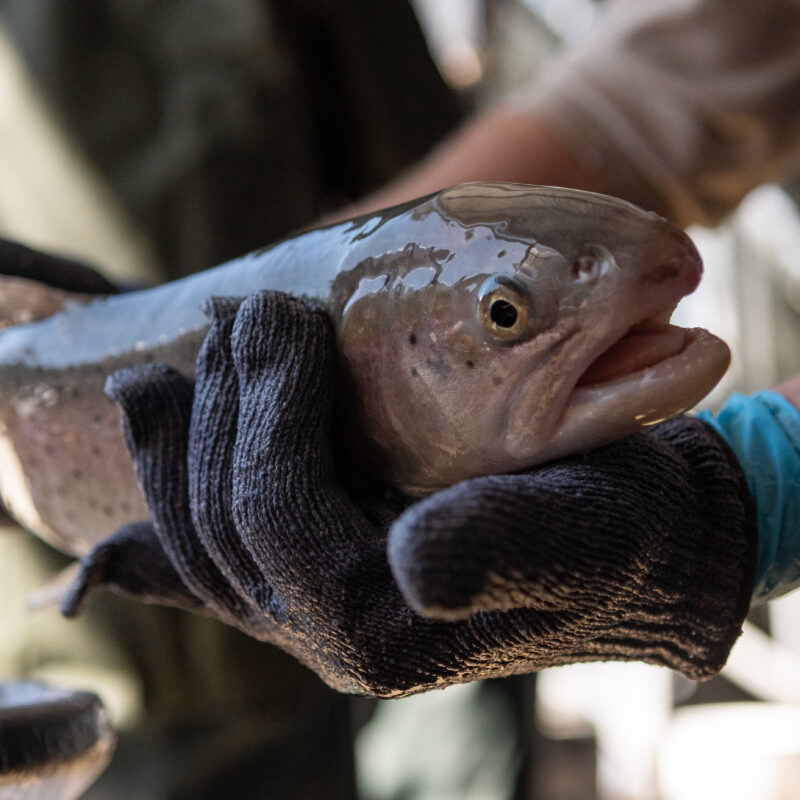For thousands of years, Lahontan cutthroat trout swam in the expansive waters of Lake Tahoe.
But by 1938, the fish — affected by European settlers’ actions in the Tahoe Basin by such as logging, overfishing, construction of dams and water diversions, and the introduction of non-native species — disappeared.
European settlers offset the lack of large fish by stocking Lake Tahoe with non-native species but for decades, the lake was devoid of Lahontan cutthroat trout.
A Nevada Department of Wildlife (NDOW) project is changing that.
Biologists studied non-native Rainbow trout — similar in many ways to Lahontan cutthroat trout — to understand their spawning patterns in Lake Tahoe. What they saw gave them hope that a self-sustaining population of Lahontan cutthroat trout could return to the lake in a limited capacity, and they began a multiyear reintroduction and monitoring effort. This year, Lahontan cutthroat were documented exhibiting spawning behavior in a tributary of the lake — the first unassisted attempt in Lake Tahoe in nearly 90 years, according to state biologists.
That effort by the Lahontan cutthroat trout (LCT) — the state fish of Nevada known for its ability to grow as long as 4 feet — is exciting for biologists and sportsmen alike. It is also an important step in the “recovery” of the fish, which is listed as “threatened” by the U.S. Fish and Wildlife Service.
“If we can get a few of these fish to spawn and reproduce … they can persist into the future without human intervention,” said Travis Hawks, fisheries division supervisor for the Nevada Department of Wildlife’s western region. “The ultimate goal of recovery is to get a species to the point where it can exist to be equipped to handle its environment and we don’t have to take care of it.”
The number of fish that exhibited spawning behavior in Tahoe’s Third Creek (in Incline Village) were few — 10 out of the roughly 200,000 that have been stocked during the last couple of years. But biologists expect to see those numbers increase.
“If we get 10 up there and three of them spawn … it will build upon itself,” Hawks said. “It really does have huge implications for LCT recovery.”
Since European settlement, more than 20 species of fish have been introduced to the Lake Tahoe Basin. As late as the 1990s, thousands of non-native fish were stocked in Lake Tahoe each year for sportsmen, but there was no real management of the lake as a thriving fishery, Hawks said.
“Tahoe was just a big dumping spot of fish,” he said. “The understanding of what was going on in Tahoe wasn’t there.”


